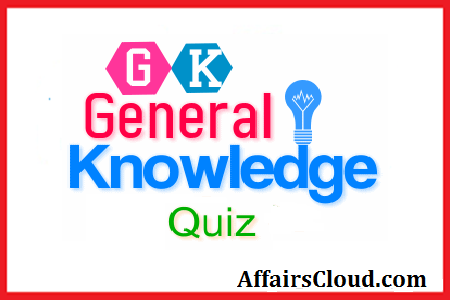Hello Aspirants. Welcome to Online General Knowledge section in Affairs cloud, which is important for all the competitive exams. We have created Some questions related to Indian GK(Economy) !!!
- Who is known as the Father of Economics ?
1.Dadabhai Naoroji
2.Aristotle
3.Adam Smith
4.VKRV Rao
5.None of theseAnswer – 3.Adam Smith
Explanation :
Adam smith is known as The Father Of Economics. Adam Smith is often touted as the world’s first free-market capitalist. While that designation is probably a bit overstated, Smith’s place in history as the father of moderneconomics and a major proponent of laissez-faire economic policies is quite secure. - ………………….. examine the behaviour of basic elements in the economy including individual agents and market and their interaction.
1.Micro Economics
2.Macro Economics
3.Modern Economy
4.Open Economy
5.None of theseAnswer – 1.Micro Economics
Explanation :
Micro Economics examine the behaviour of basic elements in the economy including individual agents and market and their interaction.
Microeconomics is a branch of economics that studies the behavior of individuals and firms in making decisions regarding the allocation of limited resources. Typically, it applies to markets where goods or services are bought and sold. - ……………………..studies the economy as a whole and its features like national income, unemployment, poverty, balance of payment and inflation
1.Modern Economy
2.Modern Economy
3.Open Economy
4.Macro Economics
5.None of theseAnswer – 4.Macro Economics
Explanation :
Macroeconomics is a branch of economics dealing with the performance, structure, behavior, and decision-making of an economy as a whole, rather than individual markets. This includes national, regional, and global economies. - Which of the following is generally free from trade barriers and where exports and imports from a large % of GDP ?
1.Modern Economy
2.Open Economy
3.Closed Economy
4.Macro Economics
5.None of theseAnswer – 2.Open Economy
Explanation :
An open economy is an economy in which there are economic activities between the domestic community and outside (people, and even businesses, can trade in goods and services with other people and businesses in the international community, and funds can flow as investments across the border). - An economy in which no activity is conducted with outside economy is called ……………..
1.Open Economy
2.Modern Economy
3.Closed Economy
4.Micro Economics
5.None of theseAnswer – 3.Closed Economy
Explanation :
A closed economy is self-sufficient, meaning that no imports are brought in and no exports are sent out. The goal is to provide consumers with everything that they need from within the economy’s borders. - Which of the following is primary sectors of Indian Economy ?
1.Agriculture
2.Mining
3.Business
4.Community
5.None of theseAnswer – 1.Agriculture
Explanation :
The primary sector of the economy is the sector of an economy making direct use of natural resources. This includes agriculture,forestry and fishing . - Business, Transport, telecommunication, banking, insurance, real estate, community and personal services are ……………….. sectors of Indian Economy
1.Primary Sectors
2.Secondary Sectors
3.All the above
4.Tertiary sectors
5.None of theseAnswer – 4.Tertiary sectors
Explanation :
The tertiary sector of the economy (also known as the service sector or the service industry) is one of the three economic sectors, the others being the secondary sector
(approximately the same as manufacturing) and the primary sector (agriculture, fishing, and extraction such as mining). - Which of the following is secondary sectors of Indian Economy ?
1.Construction
2.Water Supply
3.Manufacturing
4.Gas
5.All of theseAnswer – 5.All of these
Explanation :
The secondary sector of the economy includes those economic sectors that produce a finished, usable product: production and construction. - In India financial year is from ………………….. to …………………..
1.1st May to 30th July
2.1st April to 31st March
3.1st January to 30th September
4.1st February to 30th June
5.None of theseAnswer – 1st April to 31st March
Explanation :
In India, the government’s financial year runs from 1 April to 31 March midnight. Example: 1 April 2015 to 31 March 2016 for the financial year2015–2016. It is also abbreviated as FY16. Companies following the Indian Depositary Receipt (IDR) are given freedom to choose their financial year. - When the national income is measured at the base year price, it is called national income at …………….
1.Indirect taxes
2.Constant price
3.Factor Cost
4.Current year price
5.None of theseAnswer – 2.Constant
price
Explanation :
When the national income is measured at the base year price, it is called national income at Constant price and When the national income is measured at the current year price, it is called national income at current year price
AffairsCloud Recommends Oliveboard Mock Test
AffairsCloud Ebook - Support Us to Grow
Govt Jobs by Category
Bank Jobs Notification



